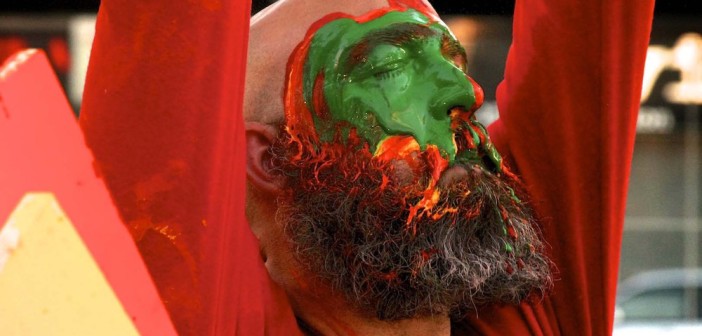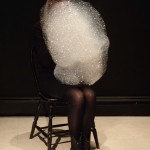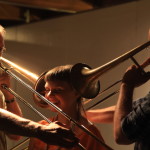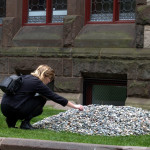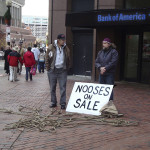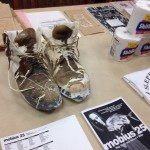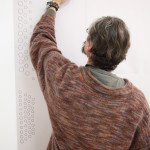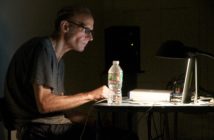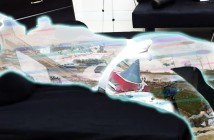Mobius is an organization of artists dedicated to generating, testing, and shaping experimental art across media. The concept of the ''experimental'' has been a core aspect of Mobius's mission since the organization’s founding as a non-profit in 1977 by Marilyn Arsem. Since its inception, Mobius artists have not only shared ideas about their ''experimental'' practices, but have also held one another accountable for manifesting such ideas through realized artworks.
During the 1980s and '90s Mobius occupied a space on 354 Congress Street functioning as a venue where local, national and international artists could create and show the kind of work that was not often shown in other galleries or spaces. Many of their projects existed outside of the accepted frameworks of the time and included sound art, performance art, installation, video, and intermedia works. Though we have changed spaces several times, Mobius has persisted in its mission for nearly forty years and continues to thrive as an experimental art organization and community.
How and why did you first become involved in Mobius?
I was first introduced to Mobius while a student in the Studio for Interrelated Media (SIM) program at Massachusetts College of Art. At the time, as co-director of the SIM department’s annual Eventworks festival, I invited a four Mobius artists to present their work, namely Jeff Huckleberry, Sandy Huckleberry, Milan Kohout, and Lewis Gesner. In the few years that followed, I worked closely with Milan Kohout, as well as presenting my own artwork at Mobius.
I was invited to join the group as an artist in 2010. I recognized the opportunity as a way to challenge and foster my practice. There are amazing artists in the group who engage each other’s work thoughtfully and critically. When you get feedback from the group it is coming from a range of disciplines, which often provides unique insight about the work. I was also inspired by how the organization functioned with artists at the core of every administrative decision and by the potential to experiment with systemic change. As an artist-run organization, Mobius requires its member to be active curators, producers, and supporters of a larger community of artists.
Now that you are its Director, what do you hope to accomplish at the helm ?
Mobius has charted an enormous amount of artistic territory, both past and present. We have a rich history which is significant to experimental art communities globally, as well as to the culture of Boston itself. One of my goals as director is to continue to bring our history and wisdom into focus by means of artistic discourse on local, national and international scales. Another one of my overarching goals is to provide deeper support for artists and the projects they bring to Mobius, as well as to extend these practices and dialogues to other organizations. Fundamentally, I wish to protect and ensure a space where artists can feel free to experiment without commercial pressures and where meaningful discourse can take place. I envision Mobius occupying an exciting, new space within the next 2 to 3 years.
What are your plans for Mobius in the coming year? And please share some recent accomplishments.
My plans for Mobius in the coming year include updating our web presence and laying the groundwork for finding a new space. I've recently been in dialogue with other organizations and galleries with the aim of bringing Mobius artists and our programming into new and different venues. I’m excited about our upcoming night series between June 11 and 22 at Boston University’s thriving 808 Gallery. Participating artists will have access to an empty gallery and must find elegant ways to work with the scale and character of that space.
In July and August, I'm curating an exhibition featuring Mobius artist Jeff Huckleberry at the Mills Gallery. The exhibition will include a series of live performance events involving Huckleberry and other guest artists.
I've also been working on a proposal for an exhibition of live art that takes as a point of departure the history of Mobius and experimental art in Boston over the last 40 years. During a recent trip to New York, I had the opportunity to workshop the proposed exhibition at the Independent Curators International (ICI) Curatorial Intensive. The Intensive allowed me the space to share the work of Mobius and other Boston-based artists to an audience of curators from all over the world. During the Intensive, I received extremely valuable feedback and perspectives on how to move the project forward.
What challenges does Mobius currently face and how are you working to address them? What's its biggest need right now?
Mobius currently faces the challenge of effectively communicating with an audience who is unfamiliar with the work our artists have and continue to generate. Communicating the value of experiential art and connecting to potential funders and supporters has been a challenge. This kind of work has only recently re-emerged into the mainstream in the last five years. In an effort to strengthen our communication, we are developing a new website which will do a better job of highlighting our current projects and which will provide a more in depth account of our organization’s history and our rich, extensive archive. Tufts University is currently housing, maintaining and processing this archive. In addition, scholars will have web access to our archive, once inventorying and cataloging of our collection is complete. At that point, site visitors will have easier and more thorough access to our organization’s work.
Considering challenges, another issue is the space we currently inhabit. While the scale of the our 55 Norfolk Street location provides ample opportunity for intimate viewing, our small space prevents us from curating large shows and events. Given the fact that we are an organization consisting of 21 artists working in a variety of disciplines, we certainly could benefit from a larger space. With this in mind, we are steadily developing a sense of what kind of space is feasible for us in the long term and have our eyes open for availabilities in the local market.
Which people and organizations do you look to for guidance?
There is a lot of internal support from Mobius. Both former director Jed Speare and founding artist Marilyn Arsem have been invaluable advisors. I've also received guidance from Hunter O'Hanian, Museum Director of New York’s Leslie-Lohman Museum of Gay and Lesbian Art. Hunter has proved enormously helpful in the last few years, both with general counseling as well as with the nuts and bolts of art management issues.
Name one challenge that the Boston cultural sector faces, and how you’d suggest fixing it.
The good news (challenge) is that there is more going on in Boston that anyone can really keep track. While Big Red & Shiny does a great job reporting, you can't cover everything! There is just too much happening in this small, but culturally-rich city!
As a regional arts agency, NEFA is committed to establishing connections and networks throughout New England. Their project "Creative Ground" is one step to connect creative communities, artists, individuals and organizations. I also agree with Stella McGregor [see The Urbano Project's Boston Common profile here]that we need to let younger voices be heard in citywide / statewide conversations about the future. If we can come together not just in the city-wide level, but at the state, regional and national levels, we have a greater chance at supporting art and cultural transformation in significant ways locally. At this point in time we are connected to and influenced just as much by external forces as by ''local'' ones.
Tell us about one cultural event/exhibition or organization/individual (other than your own) that has exceeded your expectations recently. What work are they doing, and why is it important?
While I have been impressed with many events and exhibitions in and around Boston, particularly memorable is Sandrine Schaefer'sACCUMULATION (Phase 2) series at BU’s 808 Gallery (part of Lynne Cooney's exhibition "The Lightning Speed of the Present"). Sandrine's project engaged a diverse range of artists, working in live action, who dealt with formal issues of objectification, fragmentations of the body, artistic representation, and challenged ideas of gender and archiving the ephemeral. She also brought several writers on board to review and critique the project. Implementing a project like ACCUMULATION (Phase 2) helps set the precedence for live art to be more fully integrated into gallery contexts in compelling ways.


